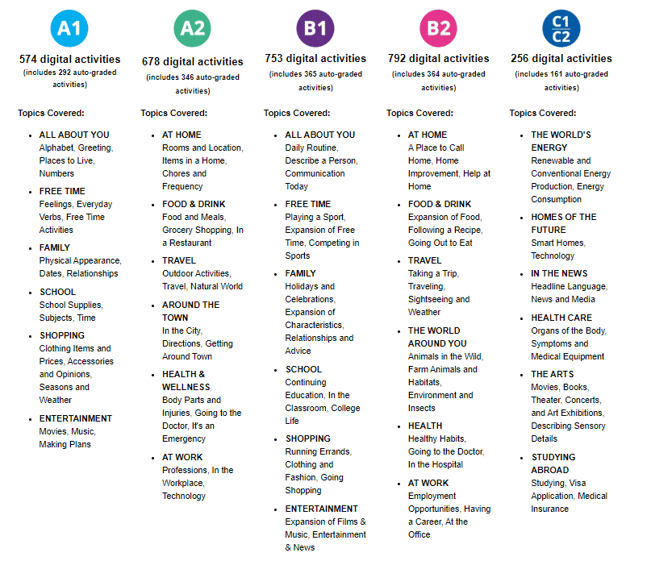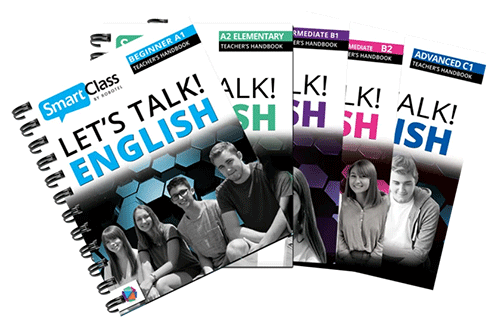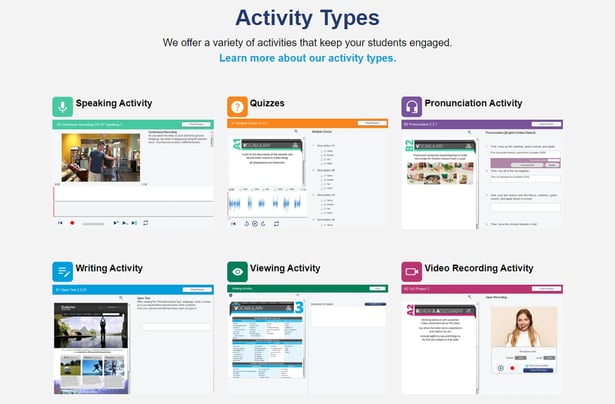How to support ESL students in the classroom
About 2 billion people on this Earth speak English. Most of them, however, are not native speakers of English. Only about 380 million people grow up with English as their native language and for the rest of us, it's a foreign language. The success of learning English as a second/third/fourth language has a lot to do with how and where we are exposed to it. Most people learn English (just like other foreign languages) in some sort of school setting. So how can you support ESL students in the classroom?
You, the English language teacher reading this, are the key to your learner's success. ESL/EFL teachers all over the world have the same mission: teach their students English, motivate them inside and outside the classroom, expose them to authentic materials, create interesting and meaningful lessons, immerse them in a new culture, prepare them for the "real" world of English speakers and so forth. Setting this up can be quite a challenge, so let's take a look at what it takes to create interesting and engaging ESL/EFL lessons.
Table of content
- Things to know before you get started
- How to support ESL students in the classroom
- The framework needed for a successful language classroom
- Conclusion
1. Things to know before you get started
Be familiar with the terms of your particular field of expertise
When it comes to language teaching, especially English language teaching, you will be confronted with a lot of acronyms and different terms. While they all seem very similar, there are some key differences that are important when you are trying to find the right resources or activities for your students.
Acronyms to understand: ESL, EFL, ELL, ELT, EAP, SLA , ELM, ESOL, ELD, LEP...
Standards to know: CEFR proficiency standards (Europe), Common Core State Standards (United States), TESOL standards, CLB standards...
Adapt your teaching to your student's level
It is important to be mindful of the competencies and language skills your ESL students have. You can't expect a beginner to master the same activities as an advanced student. That doesn't mean you can't use the same material though or teach about the same topic. The key lies in creating activities that respect your students' abilities and make them successful, hence motivated.
Beginner students have very little English skills. Simple & fun games, lots of repetition, or matching activities are a great way to engage students actively in your lessons.
Elementary students improve their basic skills. Group activities can be a lot of fun at this stage to get students talking and interacting with one another.
Intermediate students should be able to understand most non-technical and specific conversations in the foreign language. You can ask them to prepare short presentations and have discussions with their classmates. Debates are a great way to enable critical thinking, as well as speaking, listening, writing, and reading skills.
Advanced students should be able to speak, read, and write about various topics without prior preparation. You can offer them more complex activities such as reading newspapers, listening to podcasts, writing essays and analyses.
2. How to support ESL students in the classroom
In your class, it is important to create a positive environment. You want your students to feel comfortable in their learning environment. That will help them a lot in learning a foreign language.
Build a trusting relationship between you as the teacher and your students
As a teacher, you want to establish a mentor relationship with your students: talk with each of them to know and understand them (their culture, what they are interested in, their goals, their level of motivation). You almost need to teach like a coach! The role of teachers has changed so much in the past decades, that you are more than “just” teaching kids a language. You have become a facilitator.
Decrease student anxiety
In order to decrease their anxiety and increase their confidence in learning a foreign language, it is important for students to practice every day and establish routines (read a book, read a newspaper, watch movies…) The more they practice, the more confident they will become.
Practicing “speaking” is maybe the most difficult part for a language learner. Often, the student cannot practice on a daily basis because he is not in a foreign country and the classes are often big. The lack of speaking practice can be very disabling for a student. He will not dare to speak in front of the other students or might be afraid to be judged on his pronunciation.
Help your students to practice their pronunciation with interactive pronunciation activities. Students can practice at their own pace at home, without any judgment, and become better at speaking.
Create a great relationship between students
Engaging students in group exercises in your ESL/EFL classroom helps facilitate communication between students. A group of 2 to 4 is the best way to practice. It is important to create cohesion in the group. Students will know each other better, feel more comfortable with each other and practice the language. To monitor your students’ work and help each student during the exercise, a language lab can be useful.
Example of group activities: ice-breaker activities, weekly reflections, writing collaborative stories, debates, or kinestethic activities
Assess students and give them feedback
Students need to be graded and need to have feedback to progress and know their level. For you teachers, it is a lot of work but it is essential.
Luckily, we live in a world full of technology, and you have platforms to do this easily for you (with this kind of platform, you can create activities > assign them to students > leave written or spoken feedback for students... Everything in one place.). Moreover, thanks to technology, you now have many auto-graded activities that allow you to drastically reduce your grading time. And remember, there are great alternatives to Google Classroom, especially for you language teachers!
3. The framework needed for a successful language classroom
Whether you have your own class, or you are supporting teachers in their classrooms, there are many materials you need and want for your students. Dictionaries, games, books, newspapers, magazines, journals, pictures...Not every school has the means to provide all (or some) of these things for their students so it's often on you, the teacher, to create or buy them.
What you can do, regardless, is create a solid framework for your teaching to ensure ALL students are included and have a chance to succeed in your classroom (and even when you teach remotely)

A curriculum
In order to do so, you need to have a curriculum. You can create your own ESL curriculum by searching for activities/ideas online/in books or use a ready-to-use curriculum. You decide what you prefer.
Remember to be organized and transparent: You need to know what you want your students to master by the end of the class. If you don’t use a turnkey curriculum, then create ESL lesson plans to know what your objectives are and how to help your students reach them. Communicating these objectives to the students is also key to involving them and making them responsible for their own learning.
Some key points your lesson plan needs to include:
- Learning Objectives (vocabulary, skills…)
- Duration
- Materials Used
- Procedures
- Assessment
A variety of activities
To adapt your teaching to each student, try to have different types of activities. Don’t forget, that the activities need to be connected with the theme studied at that time and need to be authentic in order to immerse your students into real-life situations in the target language.
Examples of ESL activities you can create:
- Kinesthetic Activities: taste cards, memory game, question cards, flashcards.
- Use Digital Content such as videos, articles, newspapers, blogs.
- Use Songs, as they are very good for students who are not comfortable speaking in class.
- Create interactive activities. Students can practice speaking, writing, listening, reading activities directly on their devices in class or at home. It is fun and stimulating.
Ideally, you mix everything together to offer a very engaging and pleasant way of learning. It will enhance learning in your classroom. Offering a variety of activities allows your students to practice and memorize more easily.
Conclusion
Being an ESL teacher today definitely has its challenges, and especially in the beginning, it might seem overwhelming. It’s a lot of work and can be stressful at times. So be sure to take some time to research and evaluate what works for you and your class, check-in with your students regularly and gather their feedback.
Fortunately, there are many guides and solutions online to help you save time and money in order to focus on what's really important: your time with the students.








